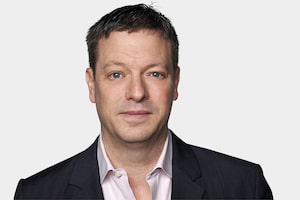There is a feeling of atavistic horror, a memory lodged in the shadows of modern history, that emerges at the sight of millions of Ukrainians fleeing their country across the borders of Central Europe, onward to the West and further into Canada. It’s a sight that has accompanied the worst moments of the last century.
The number of Ukrainians who’ve escaped across the borders of neighbouring Poland, Slovakia, Hungary and Romania in the first days of Russian President Vladimir Putin’s brutal attack on their country has surpassed a million people, and the EU commissioner for crisis management anticipates that at least seven million could ultimately be displaced by the invasion. That would make it the largest European refugee movement this century, and likely the largest since the aftermath of the Second World War.
So far, Ukraine’s European Union neighbours have been exceptionally welcoming, as have Western European countries such as Germany and France, which have allowed free rail travel to anyone with a Ukrainian ID. Canada’s government also rushed to create special immigration measures to allow thousands to enter immediately.
This has led some to make comparisons to Europe’s response to the million migrants and refugee claimants who entered the continent across the Mediterranean and over land during the 2015-16 migration crisis. After all, they were often darker-skinned and Muslim, and were welcomed in significant numbers in only a handful of countries, receiving responses in others ranging from long immigration-policy debates to militarily-defended closed borders. Poland and Hungary were especially hostile to them, using the language of racial intolerance to turn back anyone seeking asylum.
But the two events, and the two populations, don’t really compare. The 2015-16 movement was a mixed-migration population from many countries, with many different motives; not much more than half of them would eventually qualify as refugees. Some had fled Syria or Afghanistan, and urgently needed asylum; others were part of a perpetual labour-migration cycle who needed other forms of help.
Ukrainians, on the other hand, are a single population responding to a single, known event. And Europeans know they owe a long-unpaid debt to their Ukrainian neighbours, for the unwelcoming and sometimes hostile way Ukrainians were received the last three or four times they fled in the millions.
If this is to be compared to that crisis, then Ukraine’s European neighbours are better likened to Turkey, Jordan and Lebanon, each of which welcomed and settled millions of Syrians fleeing the civil war across their borders with little hesitation and at great, and still continuing, expense. (As a reminder, those refugees are also victims of Mr. Putin, who has armed and backed dictator Bashar al-Assad’s violent grip on power for the last decade.)
And, like those countries, the democracies of Europe and North America are already home to huge numbers of people of Ukrainian heritage who arrived in previous flights and migrations, often to very unwelcoming hosts. Ukrainians have been the largest source of immigration to Europe for the last six years, with around 500,000 arriving every year; in Poland alone, there were 1.5 million Ukrainians with legal residence last month.
The first time millions of Ukrainians fled their country was in the late 19th century and early 20th century, when poverty and violence led millions to move westward – including the hundreds of thousands who were settled in Canada under Sir Wilfrid Laurier. This was the first time Canada officially settled an immigrant group who were not viewed as “white” by the standards of the time; Slavic peasants faced considerable discrimination here, as they did in Central Europe.
The second time was when Ukrainians fled the horrors of the Soviet Union under Joseph Stalin’s dictatorship in the 1920s and 1930s, when a genocidal famine killed millions of Ukrainians.
Many of the Ukrainians who fled during these first two waves were Jews, escaping the antisemitic pogroms, persecutions and expulsions that darkened those decades. For example, of the approximately 300,000 Canadians who count their ethnicity as “European Jewish,” one of the largest groups would have considered themselves Ukrainian at one time, before that nation turned against them. Today, as the world cheers on a Ukraine led by a president who is Jewish, some say it’s finally possible to reconcile those identities.
The next huge exodus occurred after the Yalta Conference redrew Europe’s borders in 1945, causing millions of ethnic Ukrainians to be forcibly relocated out of territories that were suddenly part of other countries, sending many more fleeing westward.
The legacy of these flights is a Ukrainian diaspora that includes 1.4 million Canadians, a million Americans, 1.9 million Russians and a growing number of Polish residents.
As a consequence, there is enormous support and resources available to settle and sponsor refugees from Ukraine, regardless of whether their time of asylum and exile proves to be short-lived, drags on for years, or becomes permanent. They’re our friends, neighbours and sometimes our families. And, given the history, we owe them one.
Keep your Opinions sharp and informed. Get the Opinion newsletter. Sign up today.
 Doug Saunders
Doug Saunders